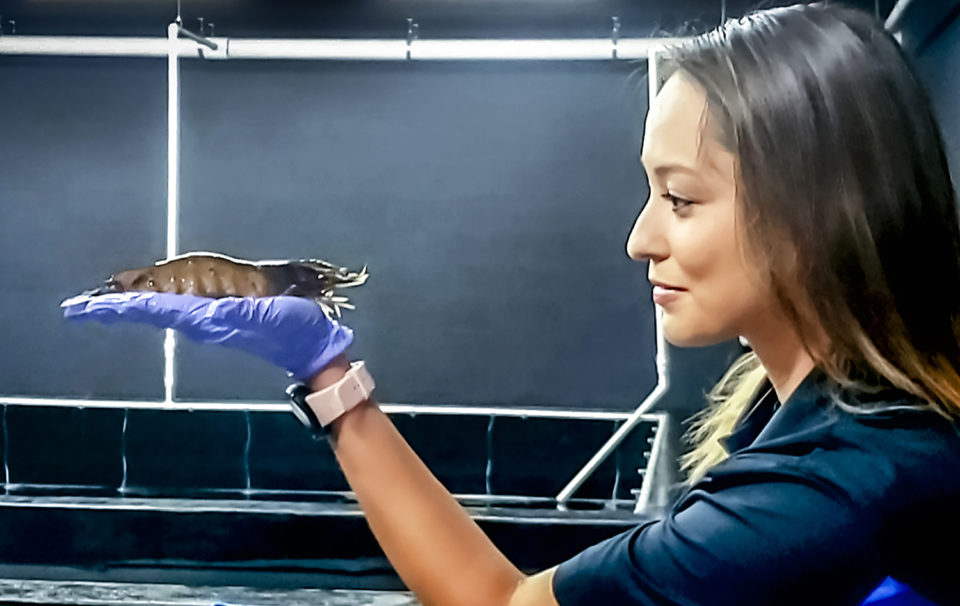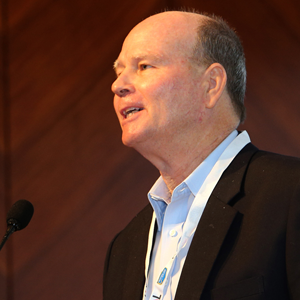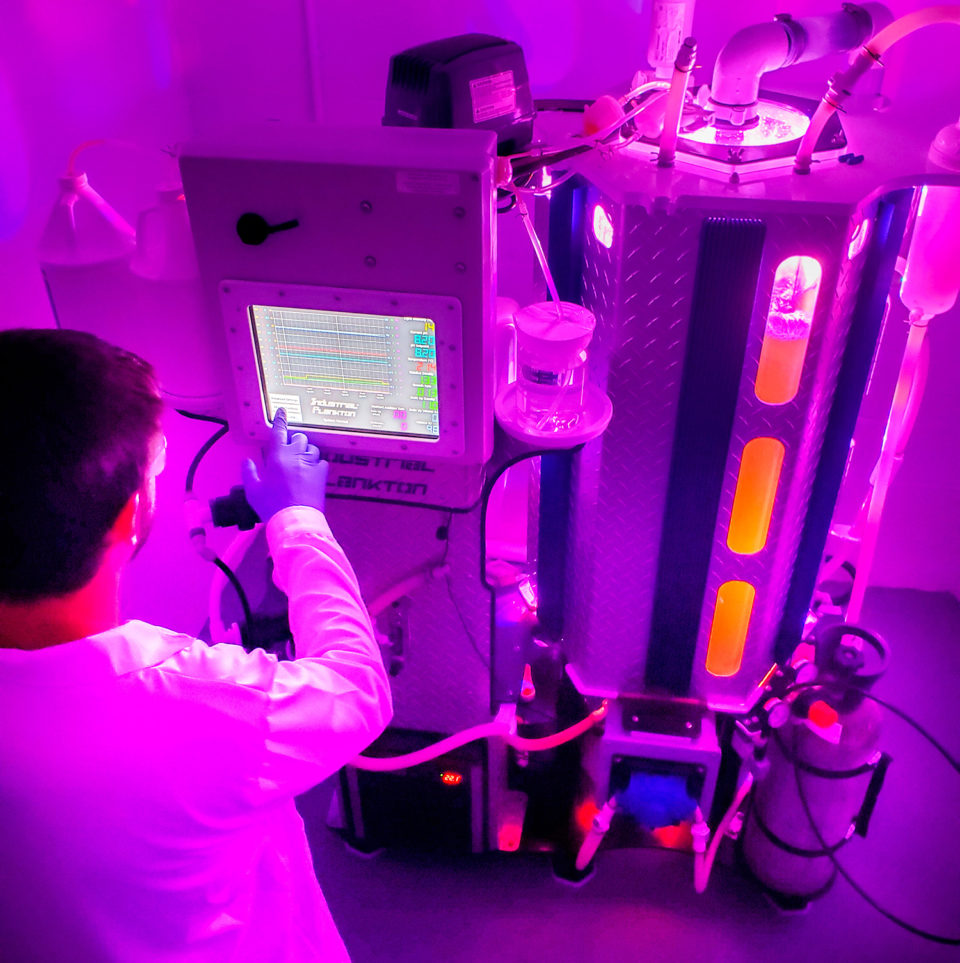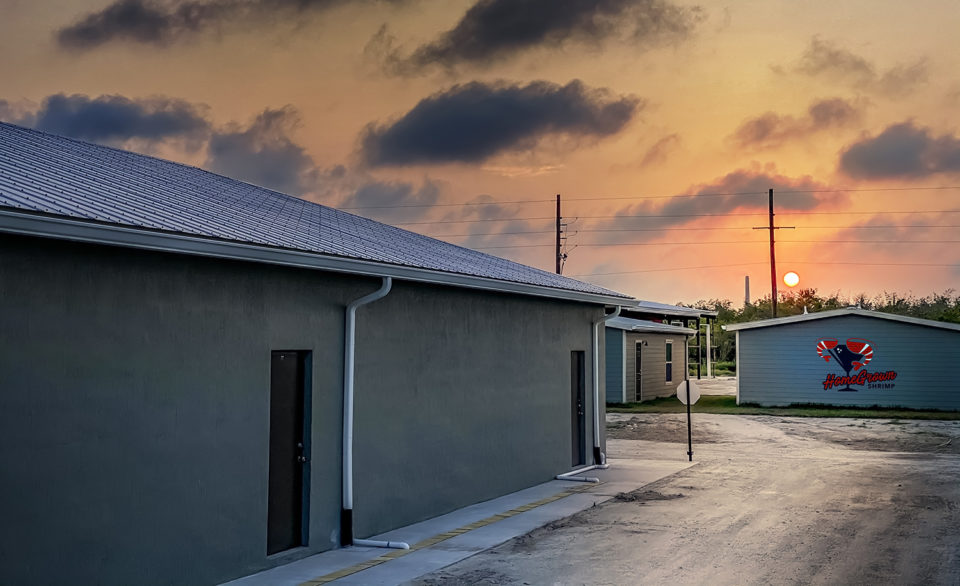CP Foods’ veteran leader sets out to change the farmed shrimp paradigm – yet again – with RAS and Homegrown Shrimp USA

Robins McIntosh has big plans for a former citrus grove in Indiantown, Florida. And they don’t involve oranges.
The executive VP of Charoen Pokphand Foods (CP Foods) is developing the 40-acre site into a next-generation facility for shrimp aquaculture. His goal: Produce up to 1,000 tons of shrimp annually with zero waste.
Although construction of the Homegrown Shrimp USA aquaculture operation is still in progress, McIntosh is already thinking about future facilities.
“It’s a pilot farm and we’re going to be trying out a lot of new and different principles,” McIntosh told the Advocate. “If it works, there could be Homegrown farms outside of every major community. We could have Homegrown facilities in Europe and China.”
First, he has to prove the concept works.
Aquaculture 5.0
It’s not the first time CP Foods has spearheaded major innovations in aquaculture. The Bangkok-based company that specializes in shrimp aquaculture, including grow-out, feed and hatchery technologies, built the first zero water exchange farm in Belize and the first biosecure farm in Latin America.
“I changed the world in Belize in 1996 – shocked the world,” McIntosh recalled. “When we have something to come out with [at Homegrown Shrimp USA], the world is going to sit up and take notice and I hope that this changes the world again.”

McIntosh refers to his planned advances in Florida as “Aquaculture 5.0” and hopes the innovations will lead to robust growth in land-based aquaculture operations that produce shrimp in close proximity to leading world markets.
The Florida farm is set to include 18 production tanks housed in a temperature-controlled metal building. The above-ground tanks will be sealed to prevent leakage and filled with artificial seawater that recirculates throughout the system.
Unlike facilities that discharge wastewater into a settling pond, the water will be disposed of through anaerobic digestion or pumped through a waste extruder. Extruded waste will be blended with a polymer and turned into pellets that can be used for surfaces ranging from road fillers to running tracks.
“It’s a very compact water-treatment footprint,” McIntosh said. “We’re not using expensive bead filters and biofilters and other high-tech stuff; it’s very simplistic, going back to environmental engineering concepts and doing it in a way that’s cost-effective.”
McIntosh also took an unconventional approach to hiring. Aside from the general manager working onsite in Florida (and an experienced team providing guidance from Thailand), most of the staff have no aquaculture experience.
“We are building this from the ground up and it’s a new concept,” McIntosh said. “In my experience, when I do new concepts like this and I use experienced aquaculturists, it’s harder to get done because there are too many bad habits to break, too many people saying, ‘you can’t do this…’ Well, we’re going to see if we can do this or not.”

Betting on success
There were similar concerns about locating the facility away from the coastline but McIntosh said the inland location a strategic move. In addition to less expensive land and less restrictive permitting, McIntosh hopes the pilot farm will demonstrate that shrimp can be produced away from salt marshes, mangroves and other valuable coastal lands and prove that the Florida farm can be replicated nationwide.
Homegrown USA will also operate as a total commercial hatchery providing postlarvae to both U.S. and European markets. In Thailand, CP foods operates inland, biosecure broodstock farms that achieve 95 percent survival. McIntosh plans to introduce new, higher performance genetics in Florida to achieve similar results.
Once the first phase comes online, McIntosh estimates the $2.5 million facility will produce 160 tons of shrimp per year. It’ll take an estimated 65 days to produce shrimp weighing up to 25 grams.
“You don’t find farms like this and, again, the scale of this will be bigger than some of the smaller farms in the U.S. now … but even at the pilot level, it’s a good scale and, if it works, the scale will get much bigger,” he said. “This hopefully represents a new level of sustainable aquaculture that has previously been thought to be impossible or economical.”

Dealing with disruptions
COVID-19 has disrupted the global supply chain, upending trade routes and sales channels in a way that nothing previously has. The pandemic has been slowing the Homegrown project in a number of ways: The hatchery is operating but, instead of bringing the rest of the facility online in June, as planned, it appears that the farm won’t be fully operational until this fall – or later, depending on how the pandemic plays out. Despite the challenges, McIntosh believes there has never been a better time to invest in a recirculating aquaculture system (RAS) shrimp farm in Florida.
“As a large exporter and foreign producer, under the current administration and new initiatives like ‘Made in the USA,’ there are extra pressures and worries that maybe they’re going to do something against the ability to export food from Southeast Asia and South America,” he explains. “By providing some shrimp farm production in the United States, we’re actually joining hands to produce in the United States as well as to export.”
A successful Homegrown Shrimp USA pilot would reassure commercial buyers that quality local shrimp is available on a regular schedule.
“It can’t be seasonal; we have to have continuous production, not batch harvesting,” McIntosh stressed. “I’m going to have to prove to the market that every week – or twice a week or three times a week – I can deliver fresh shrimp. For that to happen, it has to be anytime, anywhere, all the time production and that’s what we’re going to do here.”
Follow the Advocate on Twitter @GAA_Advocate
Now that you've finished reading the article ...
… we hope you’ll consider supporting our mission to document the evolution of the global aquaculture industry and share our vast network of contributors’ expansive knowledge every week.
By becoming a Global Seafood Alliance member, you’re ensuring that all of the pre-competitive work we do through member benefits, resources and events can continue. Individual membership costs just $50 a year. GSA individual and corporate members receive complimentary access to a series of GOAL virtual events beginning in April. Join now.
Not a GSA member? Join us.
Author
-

Jodi Helmer
Jodi Helmer is a North Carolina-based journalist covering the business of food and farming.
Related Posts

Intelligence
10 takeaways from GOAL 2019 in Chennai, India
The Global Aquaculture Alliance held its GOAL conference in Chennai, India, and recruited a host of experts in various fields to share their expertise.

Health & Welfare
Aquaculture disease experts to download at GOAL 2016
At this year’s GOAL conference in Guangzhou, China, leading animal welfare and aquatic animal disease experts will share knowledge about how producers can gird their operations. EMS, EHP, streptococcosis and sea lice will be addressed, as will the latest in area management.

Health & Welfare
The unmet promise of pondside PCR
A new generation of technology, portable PCR, offers potential for affordable, immediate, pondside diagnosis in easy-to-use handheld kits. But will it live up to the hype?

Health & Welfare
Born in Hawaii, SPF broodstock shrimp industry faces globalization
The next step for shrimp breeding will be developing animals that aren’t just disease-free, but increasingly resistant to multiple pathogens. The industry is globalizing, with suppliers setting up shop overseas. But its birthplace will always be Hawaii.

